Sachsenring
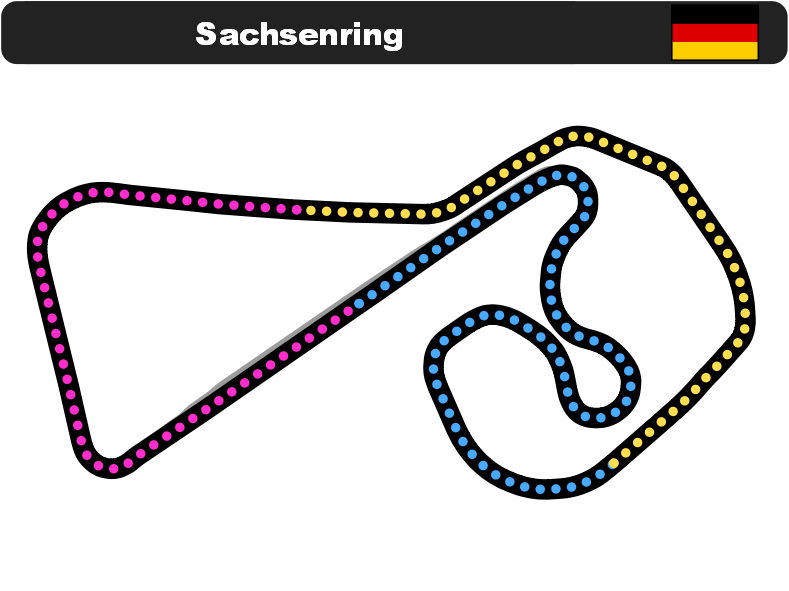 | |
 Country: Country: | Germany |
 Opened: Opened: | 1996 |
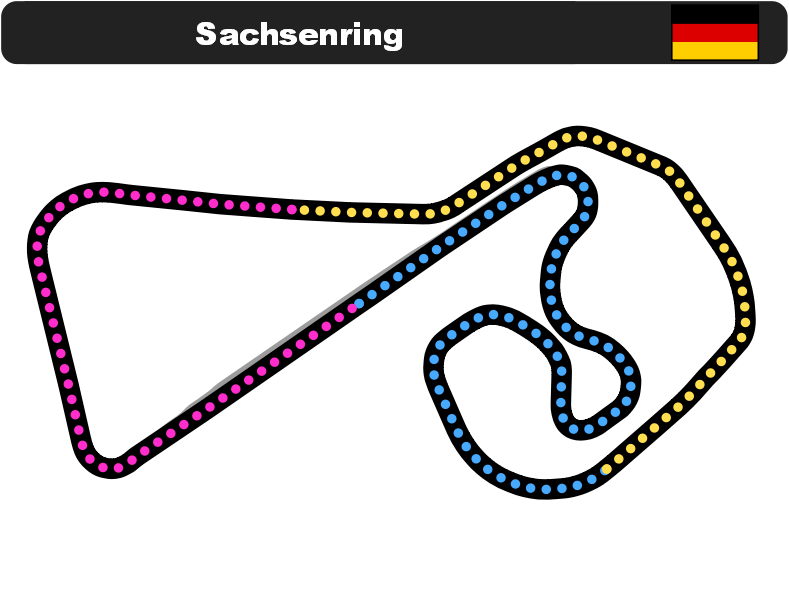 | |
 Country: Country: | Germany |
 Opened: Opened: | 1996 |
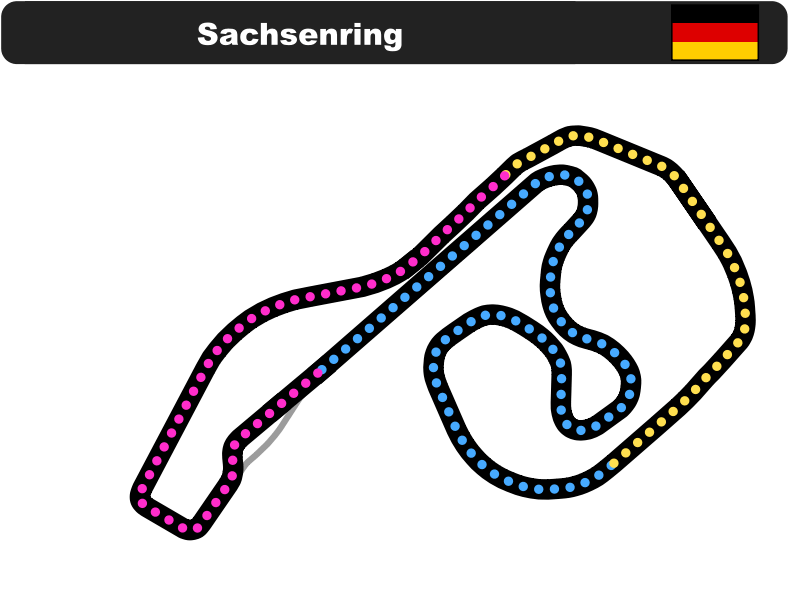 | |
 Country: Country: | Germany |
 Opened: Opened: | 1996 |
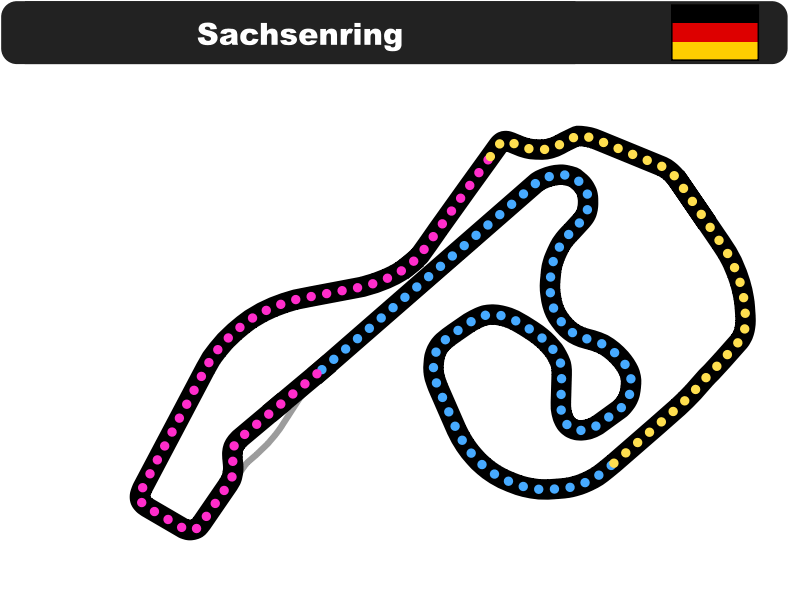 | |
 Country: Country: | Germany |
 Opened: Opened: | 1996 |
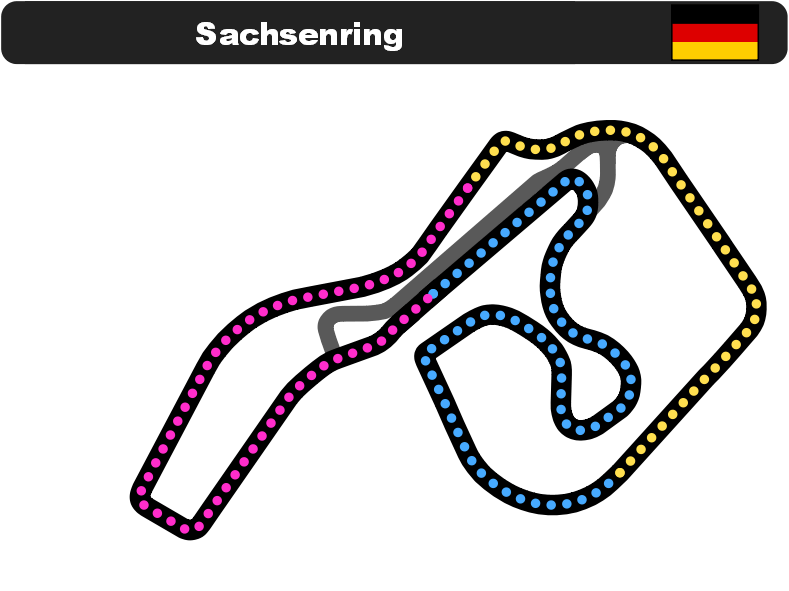 | |
 Country: Country: | Germany |
 Opened: Opened: | 1996 |
The modern Sachsenring owes its existence to road racing, dating back to 1927. When road racing was deemed too dangerous, the permanent circuit was built in the 1990s at a location equidistant between Chemnitz and Zwickau in eastern Germany.
Whilst the first road race was staged in 1927 on roads which ran through Hohenstein-Ernstthal, it wasn’t until 1937 that the name Sachsenring was used. As with many circuits, the second World War meant a hiatus in racing until 1949.
The 8.6 km road circuit held the East German motorcycle Grand Prix from 1961 to 1972, but with West German Dieter Braun winning in ’72, politics overran proceedings and thereafter the event was limited only to eastern Europeans. Road racing continued until 1990.
Following German reunification, ADAC opened a driver training facility in 1995, which was adapted to create the Sachsenring circuit for 1996.
Over the following seven years the circuit continued to be modified to improve safety – with room for improvement highlighted when Warren Hughes had a huge accident in the 1996 Super Tourenwagen Cup race.
The tight left-hand corner which once led onto the only remaining part of the original 1927 course was reprofiled in 2000 to become a faster turn with more runoff ahead of the first visit of the new DTM that year.
In 2001 the circuit featured its most substantial modification, creating a new loop designed by Hermann Tilke to the north-west which sees drivers plunge downhill in a section dubbed ‘The Waterfall’.
The most recent changes were made in 2003 when the infield section was slightly tightened, and improvements were made to circuit runoff areas.
The circuit is a regular for TCR Germany, and also continues to host the German Motorcycle Grand Prix, an event it first staged in 1998.
Sachsenring touring car race winners
Note: Data valid for period between 30th Jun 1996 and 25th Sep 2022

 Honda Civic Type-R FK7 TCR
Honda Civic Type-R FK7 TCR Hyundai i30 N TCR
Hyundai i30 N TCR Audi RS3 LMS TCR
Audi RS3 LMS TCR SEAT León Cup Racer
SEAT León Cup Racer AMG-Mercedes-Benz CLK-DTM …
AMG-Mercedes-Benz CLK-DTM … BMW 320i
BMW 320i